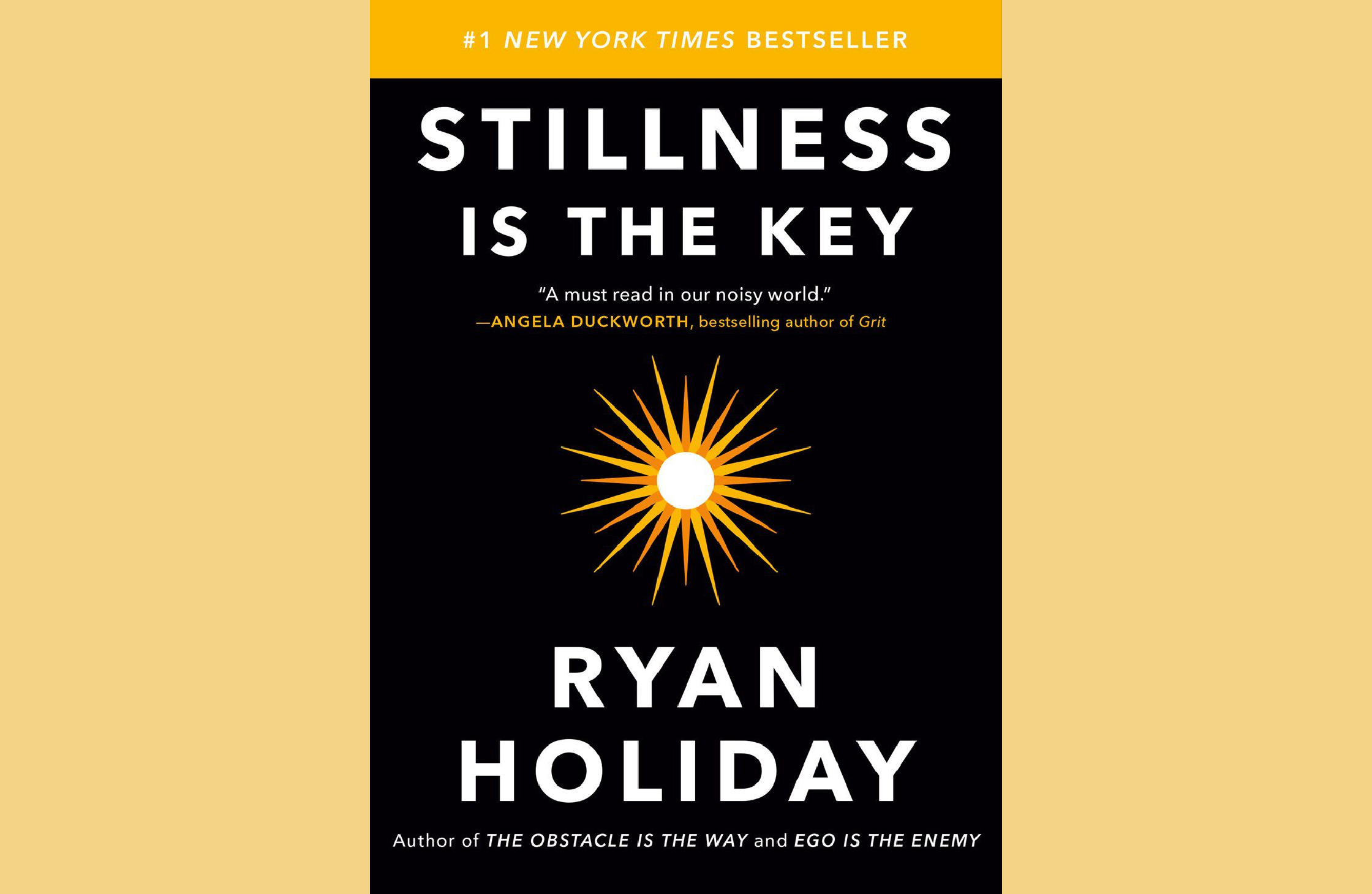Summary: Stillness Is the Key by Ryan Holiday

In "Stillness Is the Key," Ryan Holiday explores the vital quality shared by great leaders, thinkers, and artists: stillness. This state of being steady amidst chaos allows for self-mastery and focus. Drawing on historical figures like Confucius and Churchill, Holiday emphasizes that stillness is not idleness but a gateway to discipline and insight. Through examples like Sadaharu Oh and Anne Frank, he illustrates the power of stillness in overcoming adversity. In a world of distractions, this book offers a path to meaning, contentment, and excellence, providing an antidote to the stresses of modern life.
Finding moments of peace and tranquility can seem like an impossible task. We're constantly bombarded with notifications, deadlines, and obligations, leaving little room for quiet reflection. However, amidst the chaos, there exists a powerful antidote: stillness. It's not just a buzzword or a passing trend; it's a fundamental need for our well-being. As Ryan Holiday, the acclaimed author, rightly said, "Stillness is what brings strength. Victory comes from finding opportunities in problems."
Understanding the Essence of Stillness
Before we delve into the practical aspects, let's understand what stillness truly means. Stillness is not about being motionless; it's about finding inner peace amidst the external turbulence. It’s a state of mental and emotional clarity that allows you to navigate life’s challenges with grace and composure. To achieve this state, you need to cultivate a quiet mind, a tranquil spirit, and a balanced body.
1. Master the Art of Mindfulness
Mindfulness is the cornerstone of stillness. It involves being fully present in the moment, acknowledging your thoughts and feelings without judgment. As Ryan Holiday wisely puts it, "The most timeless and lasting ideas in philosophy have always been about cultivating calm and perspective." Practice mindfulness by dedicating a few minutes each day to meditation. Find a quiet space, sit or lie down comfortably, and focus on your breath.
2. Disconnect to Reconnect
Our constant connectivity to digital devices is a major barrier to stillness. Make a conscious effort to disconnect from your phone, social media, and emails, especially during your moments of leisure. Set specific times of the day for checking emails and social media, and stick to these boundaries. Use this time away from screens to engage in activities that bring you joy, such as reading, gardening, or spending quality time with loved ones.
3. Embrace Solitude
Solitude doesn’t mean isolation; it means finding comfort in your own company. As Ryan Holiday beautifully expresses, "Silence is a source of great strength." Spend time alone regularly, away from external influences. Use this time for self-reflection, journaling, or pursuing hobbies that bring you fulfillment. Solitude provides the space needed for your thoughts to settle and your mind to find stillness.
4. Practice Gratitude
Gratitude is a powerful tool for cultivating stillness. Take a few minutes each day to reflect on the things you're grateful for. It could be as simple as a beautiful sunrise, a kind gesture from a friend, or a delicious meal. By focusing on the positive aspects of your life, you shift your perspective and invite a sense of calm into your being.
5. Cultivate Mindful Movement
Physical activity, when approached mindfully, can be a gateway to stillness. Engage in activities like yoga, tai chi, or walking meditation. These practices not only enhance your physical well-being but also encourage a deep connection between your body and mind. Pay attention to each movement, each breath, and let the outside world fade away as you immerse yourself in the present moment.
6. Learn to Say No
One of the challenges of modern life is the constant pressure to say yes to every request and opportunity. As Ryan Holiday advises, "What we don’t control is our greatest asset." Learn to say no to commitments that don’t align with your priorities or values. Setting boundaries protects your time and energy, creating space for stillness to flourish.
7. Prioritize Sleep
Quality sleep is the foundation of a calm and focused mind. Create a sleep-friendly environment by keeping your bedroom dark, quiet, and cool. Establish a relaxing bedtime routine to signal your body that it's time to unwind. Avoid screens at least an hour before bed, opting for activities like reading or gentle stretching instead. By prioritizing your sleep, you enhance your ability to embrace stillness during your waking hours.
“Stillness is what aims the archer’s arrow. It inspires new ideas. It sharpens perspective and illuminates connections.”
Incorporating Stillness into Your Daily Routine
Now that you have an understanding of the practical steps to cultivate stillness, it's time to incorporate these practices into your daily routine. Start small, dedicating just a few minutes each day to mindfulness or solitude. As these moments become a natural part of your life, gradually increase the time you spend in stillness.
Remember, the journey to stillness is unique for each person. Be patient with yourself and celebrate your progress, no matter how small it may seem. Over time, the moments of stillness you create will weave into the fabric of your being, empowering you to face life's challenges with resilience and calm.
In a world that constantly demands our attention, embracing stillness is a radical act of self-care. By nurturing your inner stillness, you not only enhance your own well-being but also contribute positively to the world around you. So, take a deep breath, find a quiet corner, and embark on your journey to a calmer, more focused life. Your path to stillness begins with a single mindful moment—embrace it.
